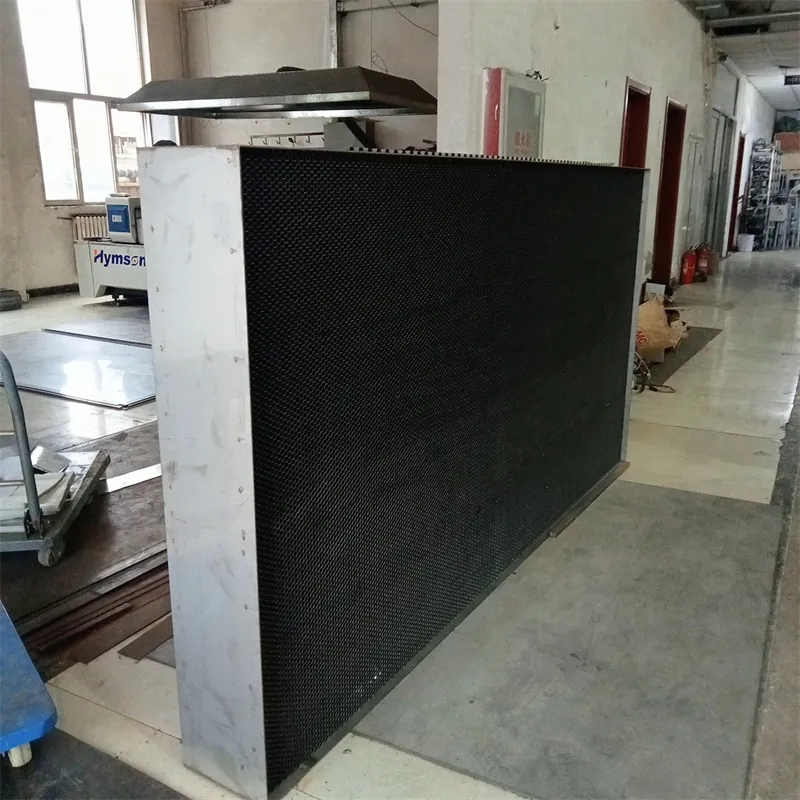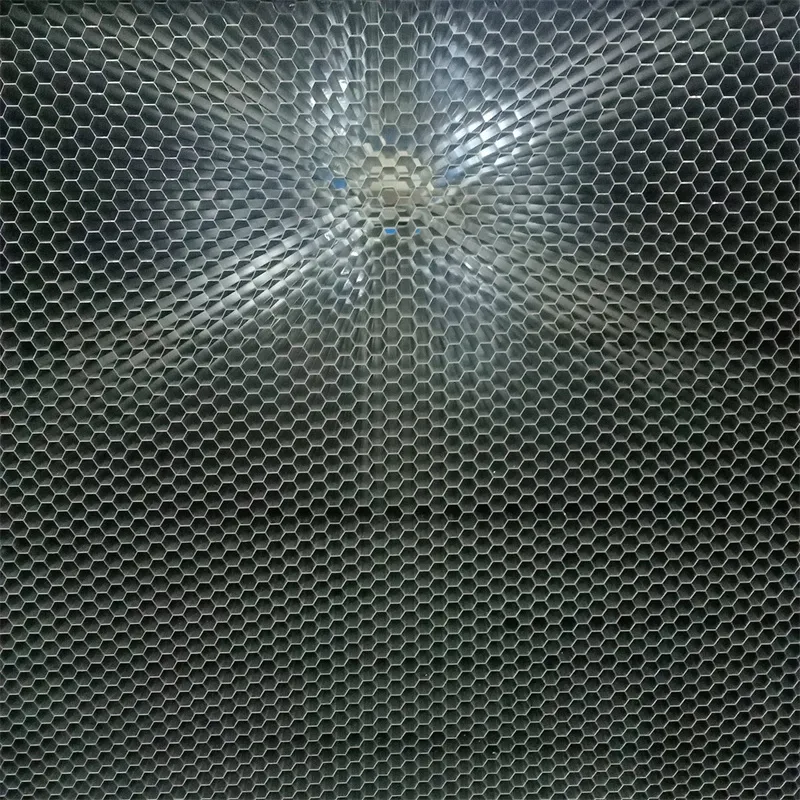
- Afrikaans
- Albanian
- Amharic
- Arabic
- Armenian
- Azerbaijani
- Basque
- Belarusian
- Bengali
- Bosnian
- Bulgarian
- Catalan
- Cebuano
- China
- China (Taiwan)
- Corsican
- Croatian
- Czech
- Danish
- Dutch
- English
- Esperanto
- Estonian
- Finnish
- French
- Frisian
- Galician
- Georgian
- German
- Greek
- Gujarati
- Haitian Creole
- hausa
- hawaiian
- Hebrew
- Hindi
- Miao
- Indonesian
- Italian
- Japanese
- Javanese
- Malay
- Persian
- Portuguese
- Punjabi
- Russian
- Spanish
- Swahili
- Telugu
- Vietnamese

Air Flow Straightener for Optimal MAF & HVAC Performance
The Critical Role of Air Flow Straighteners in Industrial Applications
In a vast array of industrial sectors, the precise control and accurate measurement of fluid dynamics are paramount for operational efficiency, safety, and product quality. Turbulent flow, characterized by chaotic and unpredictable fluid motion, often hinders accurate measurement and can reduce system performance. This is where an air flow straightener becomes an indispensable component. Designed to convert turbulent flow into a laminar, uniform flow profile, these devices are crucial for enhancing the accuracy of flow meters, optimizing process control, and improving overall system stability. Our product, the Filter Straightener Widely Used in Various Flow Field Wind Tunnel Water Tunnel for Testing Design, exemplifies advanced engineering in this domain, providing a robust solution for a multitude of demanding environments.
The demand for sophisticated flow conditioning solutions continues to surge across industries ranging from petrochemicals and power generation to HVAC and automotive testing. As processes become more automated and precision-dependent, the need for reliable flow straighteners intensifies. Whether it's ensuring accurate readings for a mass air flow (MAF) sensor in an automotive engine or optimizing the performance of large-scale HVAC systems, the underlying principle remains the same: a uniform flow profile yields superior results. This section delves into the fundamental importance of flow straighteners and their pervasive influence on modern industrial operations.
Technical Specifications and Performance Parameters
The effectiveness of any flow conditioning device hinges on its design and the meticulous selection of its technical parameters. A high-performance air flow straightener is engineered to achieve a uniform velocity profile with minimal pressure drop, which is critical for maintaining system efficiency. Key parameters include the cell size, material thickness, length-to-diameter ratio, and the overall structural integrity under varying operational conditions. Our Filter Straightener units are meticulously designed to meet stringent performance criteria, ensuring reliability and accuracy in diverse applications. Below is a detailed table outlining typical parameters and their significance in various industrial settings.
| Parameter | Typical Range/Value | Significance |
|---|---|---|
| Material | Stainless Steel (304, 316L), Aluminum, Inconel, Hastelloy | Corrosion resistance, temperature stability, strength for specific media (e.g., highly corrosive chemicals, high-temperature gases). |
| Cell Shape | Hexagonal, Square, Circular | Impacts straightening efficiency and pressure drop. Hexagonal and square often provide optimal balance. |
| Cell Size (Edge-to-Edge) | 1.5 mm to 25.4 mm (0.06 to 1.0 inch) | Smaller cells offer better straightening but higher pressure drop; larger cells for less restriction. |
| Foil Thickness | 0.05 mm to 0.3 mm (0.002 to 0.012 inch) | Influences structural rigidity, weight, and material cost. |
| Length (Axial) | 10 mm to 300 mm (0.4 to 12 inches) or custom | Longer lengths provide superior flow straightening but lead to greater pressure drop. |
| Temperature Range | -200°C to +1000°C (depending on material) | Ensures stability and performance in extreme thermal conditions common in industrial processes. |
| Pressure Drop | Typically | Minimizing energy loss and operational costs within the system. |
These parameters are meticulously balanced during the design and manufacturing phases to ensure that each air flow straightener delivers optimal performance for its intended application. Understanding these specifications is paramount for engineers and procurement specialists when selecting the appropriate flow conditioning solution.
Precision Manufacturing Process and Quality Assurance
The manufacturing of a high-quality air flow straightener is a highly specialized process that demands precision, advanced machinery, and rigorous quality control. Our manufacturing process begins with the selection of premium-grade raw materials, typically high-strength, corrosion-resistant metals like stainless steel (e.g., AISI 304, 316L) or aluminum alloys, chosen specifically for the operating environment's chemical and thermal demands. For extreme applications, exotic alloys such as Inconel or Hastelloy are utilized, offering superior resistance to high temperatures and aggressive media.
The core of our straightener manufacturing involves a proprietary cold-forming and precision welding process for honeycomb structures. Unlike traditional casting or forging, this method allows for extremely thin wall thicknesses and high cell density, maximizing the surface area for flow conditioning while minimizing material usage and pressure drop. Each cell is meticulously formed and joined to ensure structural integrity and uniform dimensions, critical for effective flow straightening. Post-forming, units undergo CNC machining for precise outer dimensions and flatness, ensuring seamless integration into existing pipework or test rigs. This level of precision is vital for components like a maf straightener, where even minor deviations can significantly impact engine performance data.

Quality assurance is embedded at every stage. We adhere strictly to international standards such as ISO 9001 for quality management and ANSI/ASME for dimensional tolerances and material specifications. Each batch undergoes rigorous inspection, including visual checks, dimensional verification using precision instruments, and specialized non-destructive testing (NDT) if required for critical applications. Furthermore, flow characteristics are often verified in our in-house wind tunnel testing facility, simulating real-world conditions to confirm the straightener's ability to deliver a laminar flow profile with specified swirl and velocity distribution. This comprehensive approach guarantees a long service life, typically exceeding 10 years even in harsh industrial environments, and contributes significantly to energy savings by enabling more efficient processes and accurate metering.
Diverse Application Scenarios and Key Advantages
The versatility of the air flow straightener extends across numerous industries where accurate fluid measurement and controlled flow are paramount. In the petrochemical and oil & gas sectors, they are vital for ensuring precise flow rate measurements of natural gas and crude oil, leading to accurate billing and optimized process control. Their application in metallurgy ensures uniform gas distribution in furnaces, preventing hot spots and improving product quality. In the water supply and drainage industry, flow straighteners enhance the accuracy of large-scale water meters, minimizing non-revenue water loss and improving resource management.
A significant area of application is in the automotive industry, particularly for engine testing and emissions control. A high-precision maf straightener positioned before the mass air flow sensor ensures the air entering the engine is laminar, allowing the sensor to provide accurate data for fuel-air mixture control, thereby optimizing combustion efficiency and reducing emissions. Similarly, in heating, ventilation, and air conditioning (HVAC) systems, a well-designed hvac air flow straightener placed before fans or coils significantly improves air distribution, reduces turbulence noise, and enhances the overall energy efficiency of the system by allowing components to operate at their peak performance. This contributes directly to energy savings, a critical advantage in today's sustainability-focused climate.

Beyond measurement accuracy, the technical advantages of integrating our Filter Straightener are numerous. Firstly, they significantly reduce the required upstream straight pipe run, allowing for more compact system designs and saving valuable space in congested industrial facilities. Secondly, by homogenizing the flow, they minimize wear and tear on downstream components, such as valves, pumps, and sensors, extending their operational lifespan and reducing maintenance costs. Thirdly, in corrosive environments, the use of specialized materials and anti-corrosion treatments ensures longevity and consistent performance, even when exposed to aggressive chemicals. This robustness ensures that the investment in a quality air flow straightener delivers long-term returns through enhanced reliability and reduced operational expenditures.
Custom Solutions and Manufacturer Differentiation
While standard air flow straightener designs cater to many common applications, complex industrial systems often demand highly customized solutions. A distinguishing factor among leading manufacturers is their ability to provide bespoke designs tailored to specific flow conditions, pressure requirements, material compatibility, and dimensional constraints. This includes custom geometries, specialized cell sizes, unique materials for extreme temperatures or corrosive media, and integration into existing piping or ductwork with minimal disruption. Our expertise lies in collaborating closely with clients to develop precise solutions that optimize system performance and overcome unique engineering challenges.
When evaluating manufacturers, several key factors differentiate a top-tier provider. Experience is crucial; a company with extensive service years in flow conditioning solutions, particularly in demanding B2B sectors, offers unparalleled insight and proven reliability. Certifications like ISO 9001 and adherence to industry-specific standards (e.g., API for oil & gas, ANSI for general engineering) are non-negotiable indicators of quality and consistent processes. Furthermore, a strong portfolio of successful application cases and positive customer feedback from reputable corporations underscore a manufacturer's authoritativeness. Our long-standing relationships with leading industrial players, coupled with our rigorous adherence to international quality standards, exemplify our commitment to delivering superior products like the Filter Straightener. We also emphasize transparent communication regarding delivery cycles, typically ranging from 2-4 weeks for standard products and 4-8 weeks for complex custom orders, ensuring project timelines are met with precision.

Our commitment extends beyond product delivery. We provide comprehensive technical support, from initial consultation and design assistance to post-installation troubleshooting. Each product comes with a standard 1-year warranty against manufacturing defects, underscoring our confidence in product durability and performance. This holistic approach, encompassing bespoke design capabilities, robust quality assurance, and unwavering customer support, establishes us as a trusted partner in providing critical flow conditioning solutions for the most challenging industrial applications.
Frequently Asked Questions (FAQ) about Air Flow Straighteners
-
Q: What is the primary function of an air flow straightener?
A: The primary function of an air flow straightener is to convert turbulent or swirling fluid flow into a smooth, uniform, and laminar flow profile. This is crucial for accurate flow measurement and efficient operation of downstream equipment.
-
Q: What materials are typically used for these straighteners?
A: Common materials include stainless steel (e.g., 304, 316L) for general industrial applications, aluminum for lighter weight and specific temperature ranges, and specialty alloys like Inconel or Hastelloy for high-temperature, corrosive, or extreme environments.
-
Q: How does a flow straightener improve flow meter accuracy?
A: Many flow meters (e.g., orifice plates, turbine meters, ultrasonic meters) require a fully developed, stable, and uniform flow profile for accurate readings. An air flow straightener eliminates swirls and turbulence, ensuring the flow presented to the meter meets these requirements, thus significantly enhancing measurement accuracy and repeatability.
-
Q: Can these straighteners be used for liquids as well as gases?
A: Yes, the principles of flow conditioning apply to both gases and liquids. While the term air flow straightener implies gas, the technology is broadly applicable to any fluid. Our Filter Straightener is designed for use in both wind tunnels and water tunnels, demonstrating its versatility across different media.
-
Q: What is the expected lifespan of a typical air flow straightener?
A: With proper material selection and robust manufacturing, a high-quality air flow straightener can have a service life exceeding 10-15 years, even in continuous industrial operation. Factors like fluid corrosivity, temperature fluctuations, and particulate matter can influence overall longevity.
Conclusion
The imperative for precision and efficiency in modern industrial processes underscores the critical role of the air flow straightener. From optimizing automotive engine performance with a precise maf straightener to enhancing the energy efficiency of HVAC systems and ensuring accurate metering in petrochemical plants, these components are fundamental. Our commitment to advanced manufacturing techniques, stringent quality control, and tailored engineering solutions ensures that our Filter Straightener products consistently deliver superior performance. By providing accurate and stable flow conditions, we empower industries to achieve greater operational reliability, enhance measurement accuracy, reduce energy consumption, and extend the lifespan of valuable equipment. Partnering with a proven expert in flow conditioning is an investment in the long-term success and sustainability of your operations.
References
- International Organization for Standardization (ISO) publications on fluid flow measurement in closed conduits.
- American Society of Mechanical Engineers (ASME) standards for flow measurement and fluid mechanics.
- National Institute of Standards and Technology (NIST) reports on flow calibration and uncertainty.
- Journal of Fluids Engineering (ASME) articles on flow conditioning and turbulence management.
- Proceedings of the International Conference on Flow Measurement.
Products categories
-
Why Vented Aluminum Honeycomb Is Leading the Way in Shielding and Ventilation SolutionsNewsJul.18,2025
-
Why Stainless Steel Honeycomb Panel is the Ultimate Choice for High-Tech Shielding and ProtectionNewsJul.18,2025
-
Why Honeycomb Strips Are Revolutionizing High-Speed Sealing SolutionsNewsJul.18,2025
-
Shielded Glass Innovation Powers the Future of Electromagnetic ProtectionNewsJul.18,2025
-
Precision Starts Here: Revolutionizing Airflow Control with Honeycomb Wind Tunnel SolutionsNewsJul.18,2025
-
Elevate Industrial Performance with Precision-Engineered Steel Honeycomb Core SolutionsNewsJul.18,2025
-
Vented Aluminum Honeycomb: A Smart Shield for Airflow and EMI ControlNewsJul.11,2025















